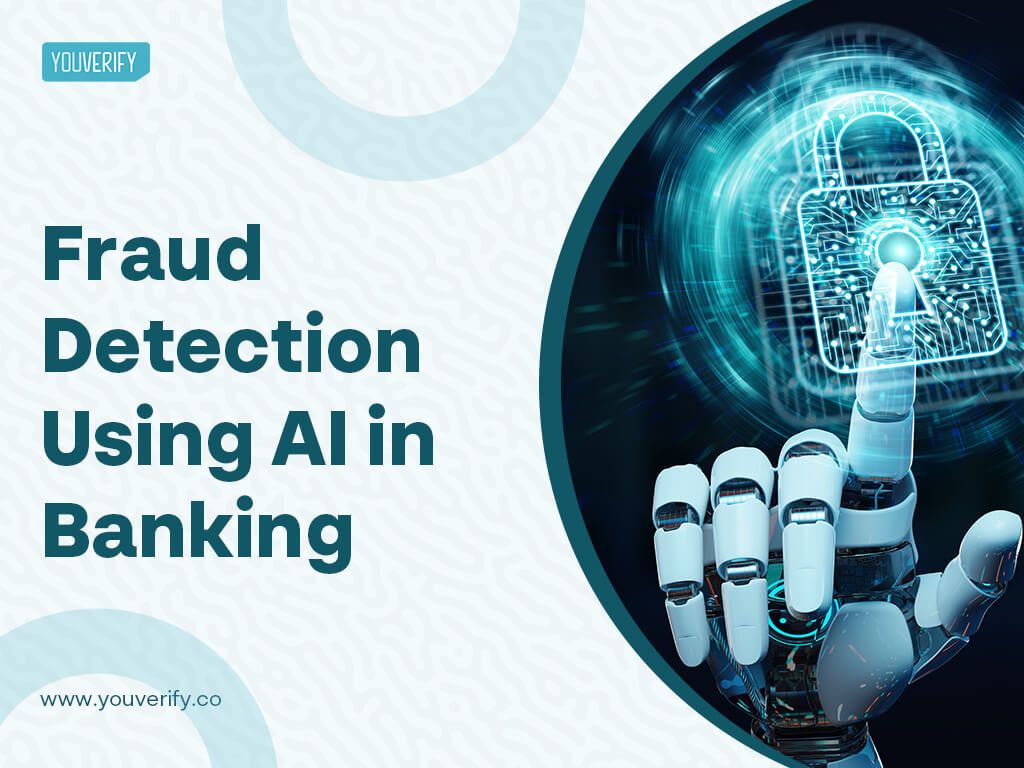
AI for Fraud Detection: Securing Digital Transactions in the Digital Age
In our rapidly evolving digital world, convenience is king. From online shopping and mobile banking to digital payments and virtual services, our lives are increasingly intertwined with digital transactions. But with this convenience comes a growing threat: fraud. Cybercriminals are constantly innovating, developing sophisticated methods to steal money, identities, and valuable data.
Enter Artificial Intelligence (AI) – the powerful ally that is revolutionizing how we detect, prevent, and respond to fraudulent activities. Think of AI as super-smart computer systems that can learn, adapt, and make decisions, much like a human brain, but at an incredibly faster pace and on a much larger scale. This article will explore how AI is becoming the ultimate guardian of our digital transactions, making our online lives safer and more secure.
The Alarming Rise of Digital Fraud: Why We Need a Strong Defense
Before we dive into AI, let’s understand the scope of the problem. Digital fraud isn’t just about someone stealing your credit card number; it encompasses a vast array of deceptive practices that cost individuals and businesses billions of dollars annually.
Common Types of Digital Fraud:
- Credit Card Fraud: Unauthorized use of card details for purchases.
- Identity Theft: Stealing personal information to open accounts or make transactions.
- Account Takeover (ATO): Gaining unauthorized access to a user’s existing account (e.g., banking, social media, email).
- Phishing and Scams: Tricking individuals into revealing sensitive information through fake emails, websites, or messages.
- Loan and Application Fraud: Submitting false information to secure loans or services.
- Insurance Fraud: Making false claims to receive payouts.
- Money Laundering: Disguising illegally obtained money to make it appear legitimate.
The Impact of Fraud is Far-Reaching:
- Financial Losses: Direct monetary loss for individuals and businesses.
- Reputational Damage: Companies lose customer trust and loyalty.
- Operational Costs: Businesses spend significant resources investigating and resolving fraud cases.
- Erosion of Trust: Consumers become hesitant to engage in digital transactions.
- Emotional Distress: Victims of fraud often experience stress, anxiety, and frustration.
Traditional fraud detection methods, often relying on fixed rules and manual reviews, are simply not agile enough to keep pace with these evolving threats. This is where AI steps in as a game-changer.
Beyond Rules: The Limitations of Traditional Fraud Detection
For a long time, fraud detection systems primarily relied on "rule-based" approaches. Imagine a set of instructions like:
- "If a transaction is over $1,000 AND it’s from a new location AND it happens at 3 AM, flag it as suspicious."
While these rules can catch some obvious cases, they have significant drawbacks:
- Lack of Adaptability: Fraudsters quickly learn and bypass fixed rules.
- High False Positives: Legitimate transactions can be flagged as fraudulent, annoying customers.
- Labor Intensive: Reviewing flagged transactions often requires significant human effort.
- Inability to Detect New Patterns: They can’t identify new, unknown types of fraud.
- Scalability Issues: Managing thousands of rules for millions of transactions becomes unwieldy.
This is why the financial industry and e-commerce businesses are increasingly turning to AI, which offers a dynamic, intelligent, and scalable solution.
Enter Artificial Intelligence: The Ultimate Weapon Against Fraud
At its core, AI for fraud detection isn’t about magic; it’s about learning from data. Instead of being explicitly programmed with every rule, AI systems are "trained" on vast amounts of transaction data, both legitimate and fraudulent. Through this training, they learn to identify subtle patterns, anomalies, and behaviors that indicate potential fraud.
Key AI Concepts for Beginners:
- Machine Learning (ML): This is the most common branch of AI used in fraud detection. ML algorithms enable computers to learn from data without being explicitly programmed. They get better over time as they process more information.
- Data: AI thrives on data. In fraud detection, this includes transaction history, customer profiles, device information, location data, and more. The more quality data an AI system has, the smarter it becomes.
- Patterns: AI is exceptionally good at finding hidden patterns in data that humans might miss. For example, it might notice that fraudulent transactions often involve a specific sequence of actions or occur within a certain time window.
- Anomaly Detection: This is a crucial AI technique. It involves identifying "outliers" or events that deviate significantly from what’s considered normal behavior. If your usual spending habits are small, local transactions, and suddenly there’s a large international purchase, AI can flag it as an anomaly.
How AI Fights Fraud: The Mechanisms Behind the Magic
AI employs several sophisticated techniques to secure digital transactions:
1. Machine Learning (ML) Models: The Brains of the Operation
ML models are the core algorithms that analyze data. There are several types commonly used:
-
Supervised Learning:
- How it works: These models are trained on a dataset where both legitimate and fraudulent transactions are clearly labeled. The AI learns from these examples to classify new, incoming transactions.
- Example: Showing the AI thousands of examples of "known fraud" (e.g., stolen credit card purchases) and "known legitimate transactions." The AI learns the characteristics of each.
- Benefit: Excellent for detecting known fraud patterns quickly and accurately.
-
Unsupervised Learning:
- How it works: Unlike supervised learning, these models work with unlabeled data. They look for unusual patterns or anomalies that stand out from the norm without being told what "fraud" specifically looks like.
- Example: If your usual online banking behavior is checking balances and paying bills, and suddenly your account tries to initiate a large transfer to an unknown international account, an unsupervised model would flag this as highly unusual, even if it hasn’t seen this exact fraud before.
- Benefit: Ideal for identifying new, emerging, or sophisticated fraud schemes that haven’t been seen before.
-
Deep Learning (DL):
- How it works: A more advanced form of machine learning, deep learning uses multi-layered "neural networks" (inspired by the human brain) to process vast amounts of complex, unstructured data (like text or images) and learn even more intricate patterns.
- Example: Analyzing not just transaction amounts, but also the text in customer service chats for suspicious language, or recognizing patterns in IP addresses and device fingerprints to identify bot attacks.
- Benefit: Excels at identifying highly complex and subtle fraud patterns that simpler ML models might miss.
2. Real-Time Transaction Monitoring
One of AI’s biggest advantages is its speed. It can analyze millions of transactions in milliseconds, often as they happen.
- Immediate Decision-Making: Instead of waiting hours or days for review, AI can instantly approve, flag for review, or decline a transaction.
- Pre-emptive Action: This allows financial institutions and e-commerce platforms to stop fraudulent transactions before they are completed, preventing losses.
3. Behavioral Analytics
AI can build a "normal" profile for each user based on their past behavior. This includes:
- Spending Habits: Typical amounts, types of merchants, frequency.
- Login Patterns: Usual time of day, devices used, location.
- Transaction Destinations: Where money is usually sent or received.
Any deviation from this established norm triggers an alert. For example, if you suddenly try to buy expensive electronics in a different country, AI will notice this anomaly compared to your usual coffee shop purchases.
4. Predictive Analytics
AI doesn’t just react; it predicts. By analyzing historical data and current trends, AI can anticipate future fraud attempts.
- Identifying High-Risk Accounts: It can flag accounts or users who exhibit behaviors that often precede fraudulent activity.
- Proactive Measures: This allows organizations to take proactive steps, such as adding extra verification steps or temporarily limiting certain transaction types, to prevent fraud before it occurs.
Key Benefits of AI in Fraud Detection: Why It’s Indispensable
The adoption of AI in fraud detection offers a multitude of advantages:
- Superior Accuracy: AI can identify fraudulent transactions with much greater precision than traditional methods, leading to fewer false positives and negatives.
- Unmatched Speed: Real-time processing means fraud can be detected and stopped in milliseconds, minimizing financial losses.
- Adaptive Learning: AI systems continuously learn from new data, adapting to emerging fraud tactics and becoming smarter over time. This makes them incredibly resilient to evolving threats.
- Cost Efficiency: By automating detection and reducing manual review, AI significantly lowers operational costs for businesses.
- Enhanced Customer Experience: Fewer false declines mean smoother transactions and less frustration for legitimate customers.
- Scalability: AI can handle massive volumes of transactions, making it suitable for large financial institutions and global e-commerce platforms.
- Detection of Unknown Fraud: Its anomaly detection capabilities allow it to uncover entirely new types of fraud that human analysts or rule-based systems might miss.
AI in Action: Real-World Applications
AI is already widely deployed across various sectors to combat fraud:
- Banking and Financial Services:
- Detecting fraudulent credit card transactions and wire transfers.
- Identifying money laundering patterns.
- Flagging suspicious loan applications.
- Monitoring unusual account activity for signs of account takeover.
- E-commerce and Retail:
- Preventing fraudulent purchases using stolen credit cards.
- Detecting refund fraud and coupon abuse.
- Identifying bot attacks and fake accounts during sales.
- Insurance:
- Detecting fraudulent claims (e.g., exaggerated damages, staged accidents).
- Analyzing discrepancies in claim documents and historical data.
- Healthcare:
- Identifying fraudulent medical claims and billing irregularities.
- Detecting prescription drug fraud.
- Telecommunications:
- Preventing subscription fraud and SIM card swapping.
- Detecting fraudulent calls and traffic manipulation.
Challenges and Considerations in AI Fraud Detection
While incredibly powerful, AI for fraud detection isn’t without its challenges:
- Data Quality and Quantity: AI models are only as good as the data they’re trained on. Incomplete, biased, or insufficient data can lead to poor performance.
- The "Black Box" Problem (Explainability): Sometimes, complex deep learning models can make decisions without clearly showing why. This "black box" nature can make it difficult for human analysts to understand or trust the AI’s judgment, especially in regulated industries.
- Evolving Fraud Tactics: Fraudsters are constantly innovating. AI systems need continuous updates and retraining to keep pace with new methods. This is an ongoing arms race.
- False Positives: While AI reduces false positives, they can still occur. A legitimate transaction might be flagged, causing inconvenience to a customer. Balancing security with user experience is crucial.
- Data Privacy and Ethics: Using vast amounts of personal transaction data raises privacy concerns. Ethical AI development ensures data is used responsibly and transparently.
The Future of AI in Fraud Detection: A Smarter, Safer Tomorrow
The evolution of AI in fraud detection is a continuous journey. We can expect to see:
- More Sophisticated Models: AI will become even better at understanding context, intent, and subtle human behaviors, making it harder for fraudsters to slip through.
- Enhanced Collaboration: Increased sharing of threat intelligence and best practices among organizations, powered by AI, will create a more unified front against fraud.
- Explainable AI (XAI): Research is ongoing to develop AI models that can better explain their reasoning, addressing the "black box" problem and building trust.
- Adaptive Security: AI systems will move towards truly autonomous self-correction, automatically updating their models as new fraud patterns emerge.
- Integration with Other Technologies: AI will increasingly integrate with blockchain, biometrics, and other security technologies to create multi-layered, robust defense systems.
Conclusion: AI – The Unsung Hero of Our Digital Economy
In an age where digital transactions are the backbone of our economy and daily lives, the threat of fraud looms large. Artificial Intelligence is not just a technological advancement; it’s the unsung hero, tirelessly working behind the scenes to safeguard our money, our identities, and our trust in the digital world.
By leveraging machine learning, deep learning, and real-time analytics, AI empowers financial institutions, e-commerce platforms, and other businesses to detect, prevent, and respond to fraud with unprecedented speed and accuracy. While challenges remain, the continuous evolution of AI promises an even more secure and resilient future for our digital transactions, allowing us to embrace the convenience of the digital age with greater peace of mind. AI for fraud detection isn’t just a luxury; it’s a necessity for securing our digital future.



Post Comment